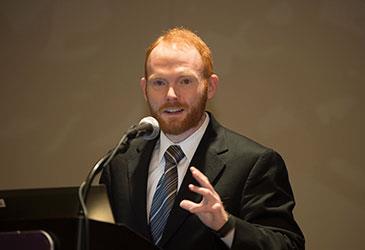Medicine historically has prioritized basic and clinical sciences as the core for medical school curriculum, but will an emerging “third science” shape the future of medical education? This question was top of mind for educators at a recent panel discussion during the 2015 AMA Annual Meeting. Learn how schools are adopting innovations around this new science.
“Medicine is founded upon two sciences: basic science and clinical science. But arguably, there is a third science schools need to incorporate,” said George Mejicano, MD, senior associate dean of medicine at Oregon Health and Sciences University. Dr. Mejicano also is a member of the AMA’s Accelerating Change in Medical Education initiative consortium, which consists of 11 U.S. medical schools that received $1 million grants to reshape the way physicians are trained.
“This ‘third science’ is a health care delivery science, which [focuses on] the actual ability to work in our health systems to produce excellent patient care. Health policy, economics, the use of evidence-based medicine and team work are really important new content areas,” he said.
David Savage (pictured right), a MD/PhD student at the University of Texas at Houston and member of the AMA initiative’s national advisory panel, agrees that schools should equally prioritize system-based care just as much as traditional medical education content.
He said that for most medical students, the first two years of school revolve around lengthy spells of studying and memorizing disease patterns in preparation for step 1 of the United States Medical Licensing Examination, which often breeds a “passive learning” style among students.
But then by the third year, students enter clinical rotations and are unprepared for complex team-based care. This abrupt transition to participating actively in team-based practice requires schools to take additional action to teach students about health care delivery systems, Savage said.
Savage said he and peers wish to learn more.
To address this need, the 11 schools in the AMA’s Accelerating Change in Medical Education initiative have developed a multifaceted approach to identify a core curriculum for health care delivery science. Embracing this third science of health care delivery, the consortium is focusing on teaching the following content:
- Structures, processes and individuals
- Health care policy and economics
- Clinical informatics and health information technology
- Population and public health
- Socio-ecological determinants of health
- Value-based care
- Health system improvement
Med school changes already underway
From teaching students how to maximize technology in practice to researching cost-effective payment models, many schools already have launched innovative programs to strengthen competencies in health care delivery sciences.
For instance, the Mayo Clinic’s Science of Healthcare Delivery program teaches students the nuances of team-based care, including delivery systems and population surveillance to improve health outcomes.
The Warren Alpert Medical School of Brown University offers a Primary Care-Population Medicine program, which allows students to pursue a dual MD/ScM degree in population medicine and earn substantive training in health disparities, social determinants of health, health systems, health policy, biostatistics and leadership skills.
Pennsylvania State University College of Medicine also launched its new systems navigation curriculum last year. Designed for first-year students, the two-pronged curriculum incorporates systems-based practice topics over a 19-month period, beginning in students’ first month of medical school.
But the work of educators and the consortium is far from over. As schools continue to implement similar programs, “We need to think about how we can actually expand the consortium in thought and in action, so that these best practices can actually be propagated,” Dr. Mejicano said. “Through this, we will collectively create the medical school of the future.”




